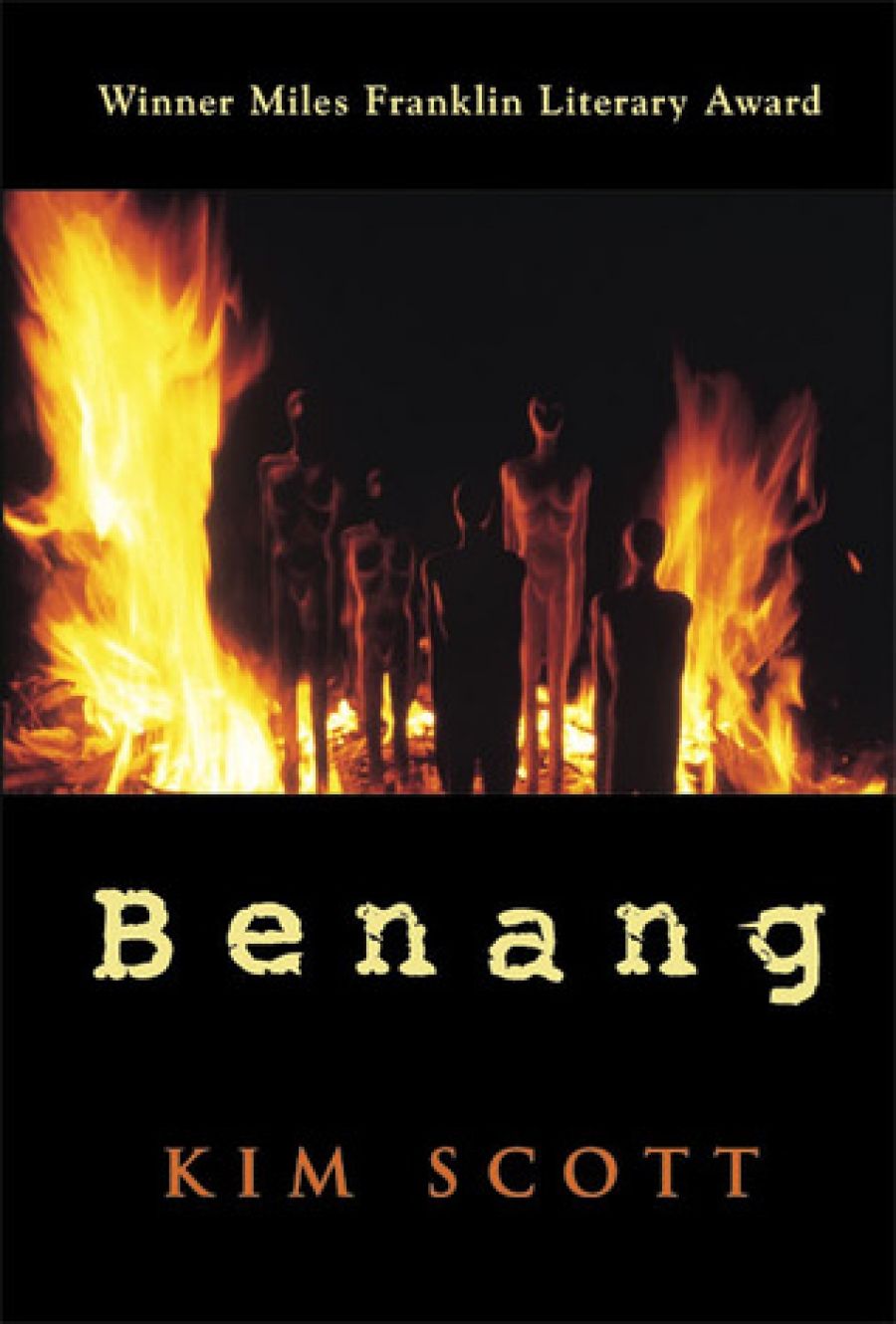
- Free Article: No
- Contents Category: Fiction
- Custom Article Title: John Donnelly reviews <em>Benang: From the heart</em> by Kim Scott
- Review Article: Yes
- Online Only: No
- Custom Highlight Text:
Kim Scott is described on the inside cover of Benang, his second novel, as ‘a descendant of people who have always lived along the south-east coast of Western Australia and is glad to be living in times when it is possible to explore the significance of that fact and be one among those who call themselves Nyoongar ...
- Book 1 Title: Benang
- Book 1 Biblio: Fremantle Arts Centre Press, $19.95 pb, 495 pp, 1 86368 240 6
‘It’s hard to know where to begin – except with each place we come to, really. Where we are right now,’ suggests Harley’s uncle Jack around a third of the way into Benang. This allows a great deal of freedom in teasing out and combining anachronistic family history material. Through his uncles’ reminiscences, his grandfather’s notebooks, and Harley’s filling in the gaps – at first tentative, later more confident and speculative – we get a new take on the story of European and Nyoongar coexistence, beginning with sheep runs founded near Nyoongar waterholes, the railway and telephone lines built along Nyoongar walking trails, to the goldrush and townships where most of the Europeans found themselves islanded, pushing the Nyoongar ever further away so they did not have to be confronted with their lack of belonging. Harley uncovers the lives of the few men – his ancestors – who married Nyoongar women, acknowledging their children, and the majority who did not, such as Ernest Scat.
A self-styled amateur eugenicist, Scat has been an active participant in the historical enterprise of seeking to make black white through successive policies of assimilation, outbreeding, and fostering. He passes to the young Harley, whom he cares for a generation after abandoning Harley’s father to an orphanage, the desire to see his grandson, ‘the first white man born’ in his family: bloodlines whitened through outbreeding, from half-caste to quadroon to octoroon. And Scat has been an enthusiastic breeder – maids and foster children among others coming under his ‘scientific’ attention – with his notes and records somehow legitimising his desire. But by the time Harley summons his story he is an old man, speechless and crippled in a wheelchair, propelled where his grandson pushes him, forced to confront his own actions. In a twist near the end of the novel, the whole mad enterprise is revealed for the sham it always was.
A mad story needs mad storytelling; and in some of Benang’s more surreal elements, I found echoes of David Ireland’s A Woman of the Future. Harley, rootless without his cultural references, is in danger of literally floating away in the air and so needs to be tied down by a rope tocar or campsite. In seeking to rewrite his family history, Harley practises at first by carving words into his grandfather’s body in a bizarre reprise of traditional initiation.
Benang is an ambitious and problematical work, a work – like its country – struggling with how to tell its story. Scott’s story could not be more timely, in the aftermath of the Stolen Generations report and the national anxiety and political cynicism surrounding the proposed constitutional preamble acknowledging Indigenous occupation of Australia.
In this sense, Benang well exemplifies Wole Soyinka’s great maxim ‘write about what you feel is most urgent’. For this reader, there is little doubt of Scott’s sense of urgency or his capacity to tell this urgent story. But the manifest strengths of Scott’s storytelling approach also exposed its weaknesses. In his desire to invoke more and more history, to summon differing experiences and add these to his tapestry, the story loses its focus: I found my attention drifting around two-thirds of the way through the story, and wonder if the same effect could not have been more sharply achieved in 350 pages rather than the nearly 500 of this big book.


Comments powered by CComment